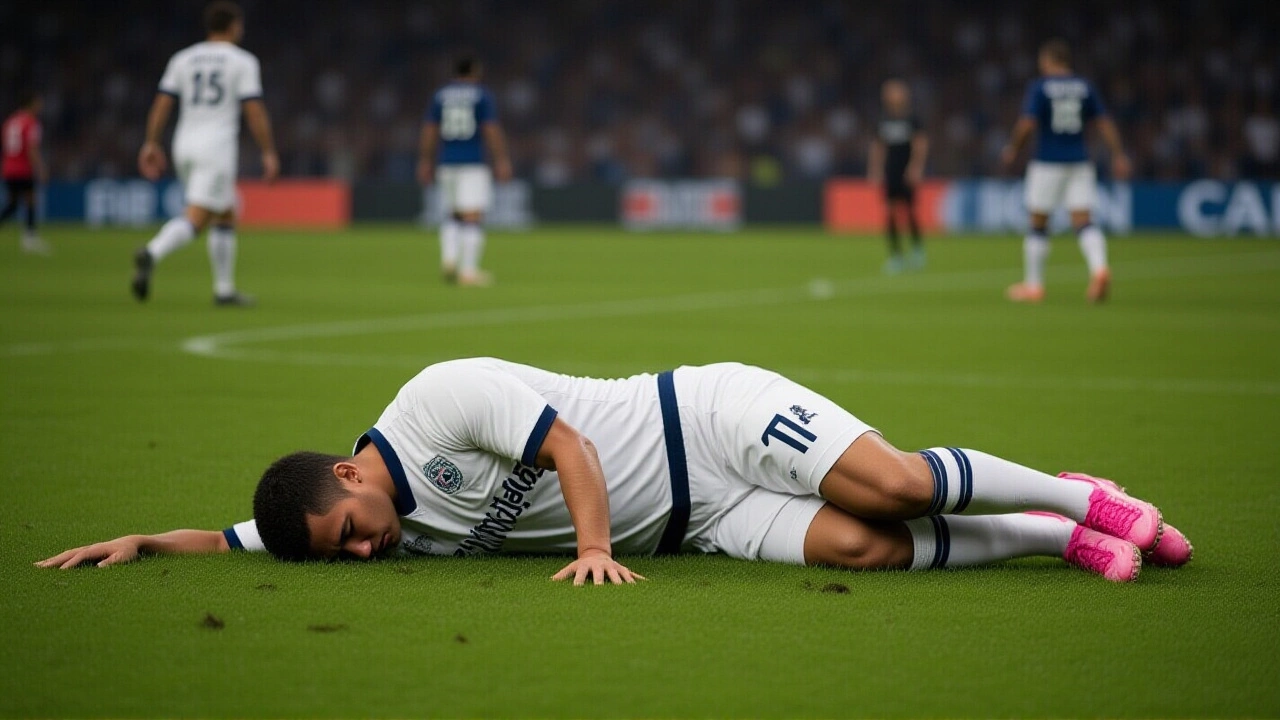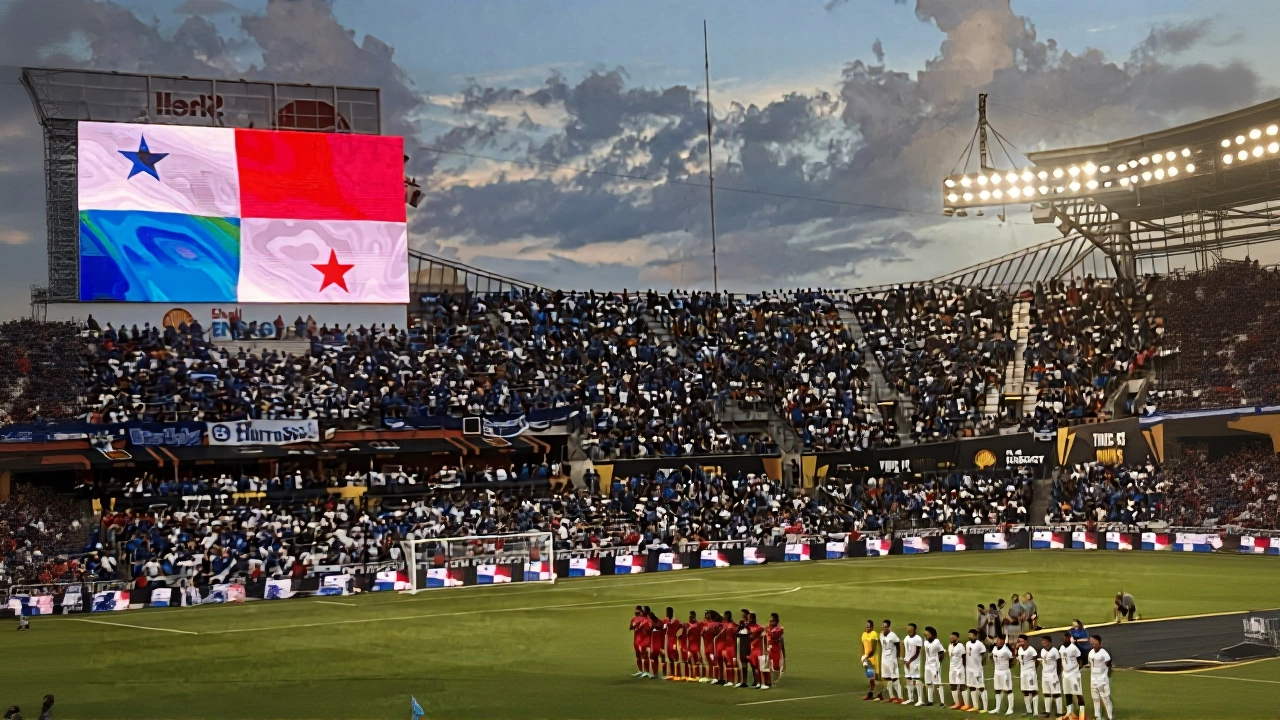When Jose Luis Rodriguez struck home the final goal in the 91st minute, the roar from Estadio Rommel Fernandez didn’t just celebrate a win—it announced a return to soccer’s biggest stage. On , Panama crushed El Salvador 3-0 in a World Cup qualifier that sealed their place at the 2026 FIFA World CupNorth America, only the second time in their history. The victory wasn’t just about points; it was about legacy. With the final whistle, fireworks lit up the Panama City sky, and a generation of fans who’d waited nearly two decades saw their dream realized.
A Perfect Run in the Crucible
Panama didn’t just qualify—they dominated. In six matches, they won three, drew three, and lost none. Twelve points. A +5 goal difference. Zero defeats. That’s not luck. That’s discipline. Their campaign began with a tense 0-0 draw in Suriname on September 4, followed by a 1-1 home stalemate against Suriname on October 14. They edged El Salvador 1-0 away on October 10, then held Guatemala to a 1-1 draw at home on September 8. The real statement came on November 13, when they overturned a two-goal deficit to beat Guatemala 3-2 in Guatemala City. That win, combined with El Salvador’s 4-0 loss to Suriname the same night, set the stage for the final showdown in Panama City.
The Moment That Defined a Nation
The game itself was a masterclass in controlled aggression. From the first whistle, Panama pressed high, suffocating El Salvador’s midfield. By the 15th minute, they’d already fired six shots—four on target. The breakthrough came at 9:09, when Keto’s header bounced off the crossbar, rebounded into the box, and fell to Rodriguez, who buried it with a left-footed finish. The stadium exploded. But the best was yet to come.
Just before halftime, Cano danced through two defenders in a tight space, drew the keeper, and slipped a pass to Rodriguez again. The finish was clinical. Two goals. Game over. The third came in stoppage time, when substitute Jose Luis Rodriguez—who’d entered the pitch in the 78th minute—pounced on a rebound after Gonzalez’s save. The ball found his boot like fate had arranged it. The crowd didn’t just cheer—they wept.
El Salvador’s Collapse and the Cost of Missed Chances
For El Salvador, it was a campaign defined by near-misses and mounting pressure. Their only win? A 1-0 away victory over Guatemala on September 4. After that, they lost five straight, including a 4-0 thrashing in Suriname and a 1-0 home loss to Guatemala. Their defense conceded 15 goals in six games. At Estadio Rommel Fernandez, they looked shell-shocked. Julio Sibrián’s last-ditch foul in the 91st minute was the final act of a team that had no answers. Their -9 goal difference was the worst in the group. For a nation that once reached the 1982 World Cup, this was a bitter end.

What This Means for Panama
This isn’t just about playing in the World Cup. It’s about visibility. Investment. Hope. Panama’s last appearance was in 2018, when they lost all three group games. This time, they’re not just going—they’re coming with momentum. The Panama Football Federation has quietly invested in youth academies since 2020. The 2026 squad features six players under 23, including Iván Anderson and Edgardo Fariña, who started key matches. Their success could trigger a new wave of sponsorship deals, infrastructure upgrades, and even a bid for future tournaments. And for the first time, Panamanian clubs are being asked to loan players abroad—not just to import them.
What’s Next?
Panama will be placed in one of the 12 groups for the 2026 World Cup, with the draw set for December 2025. They’ll likely face a European powerhouse, a South American team, and another Concacaf side. Their path won’t be easy—but they’ve proven they can compete. Meanwhile, El Salvador must now rebuild. Their federation has already announced a youth-focused overhaul, but without a World Cup to rally around, fan engagement may slump. The same day Panama celebrated, Jamaica’s head coach Steve McClaren resigned after his team failed to qualify, underscoring just how brutal this cycle has been.

The Legacy of Estadio Rommel Fernandez
On that Tuesday night, Estadio Rommel Fernandez wasn’t just a stadium. It was a cathedral. The 28,000 fans inside didn’t just watch—they participated. The 78°F evening, with a 6 mph northwest wind, was perfect. The betting odds had Panama at -680, but no number could capture what happened here. This was the moment Panama stopped being a regional footnote and became a contender. The players didn’t just score goals—they wrote history.
Frequently Asked Questions
How many times has Panama qualified for the World Cup before?
Panama has qualified for the World Cup twice: in 2018 and now in 2026. Their 2018 appearance ended in three group-stage losses, but this time, they enter with momentum, a perfect qualifying record, and a core of players who’ve grown together over four years of intense competition. This marks their most confident World Cup campaign to date.
Who scored the goals for Panama in the decisive match?
Two goals came from Jose Luis Rodriguez, the substitute who entered in the 78th minute, and one from Keto. Rodriguez’s second goal, in stoppage time, was the exclamation point. He became the first substitute to score twice in a single World Cup qualifier for Panama, and his performance instantly made him a national icon.
Why was the win against El Salvador so critical?
Panama needed a three-goal win to guarantee qualification, regardless of other results. A 2-0 or 1-0 victory wouldn’t have been enough. El Salvador’s poor goal difference (-9) meant Panama had to outscore them by three. The 3-0 result not only secured their spot but also gave them the best goal difference in the group, positioning them as a top-seeded team in the 2026 draw.
How did Panama’s performance compare to other Concacaf teams in qualifying?
Panama finished tied for first in Group A with the United States, who had 12 points but a worse goal difference (+3). Only Canada, Mexico, and the U.S. had perfect records among the top teams. But Panama’s consistency—never losing, never collapsing under pressure—was unmatched among mid-tier Concacaf nations. Their record was cleaner than Jamaica’s (3 wins, 2 draws, 1 loss) and far superior to El Salvador’s.
What impact will this have on Panamanian soccer development?
This qualification is expected to trigger a surge in youth participation, with over 12,000 new registrations in local academies already reported since November 18. The Panamanian government has pledged $15 million toward stadium upgrades and coaching certifications. Clubs like Tauro FC and San Francisco FC are now in talks with European scouts for player exports, turning Panama into a talent pipeline—not just a consumer of foreign stars.
What’s the significance of the 2026 World Cup being hosted in North America?
For Panama, playing in the U.S., Canada, and Mexico means shorter travel, larger fan contingents, and more media exposure. They’re likely to face the U.S. or Mexico in the group stage, creating high-stakes matchups that could draw over 50,000 Panamanian fans to stadiums in Texas or California. This isn’t just a tournament—it’s a homecoming on a continental scale.
